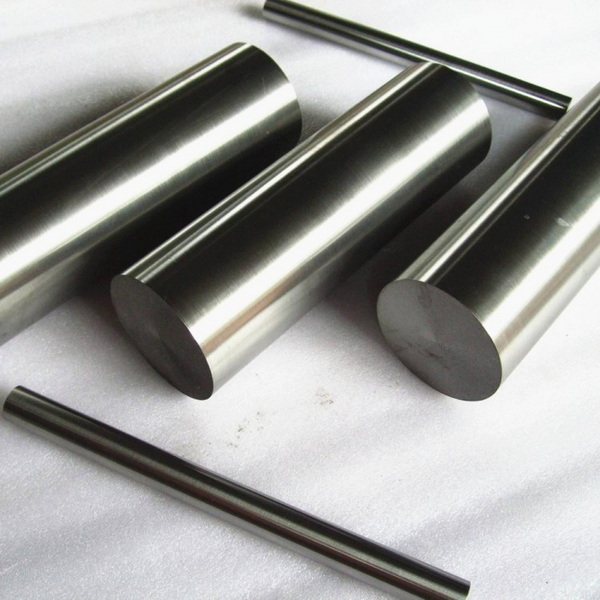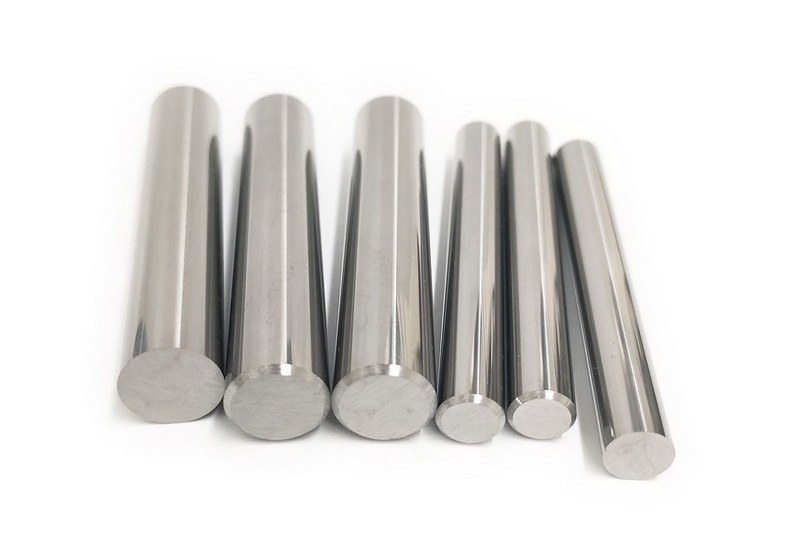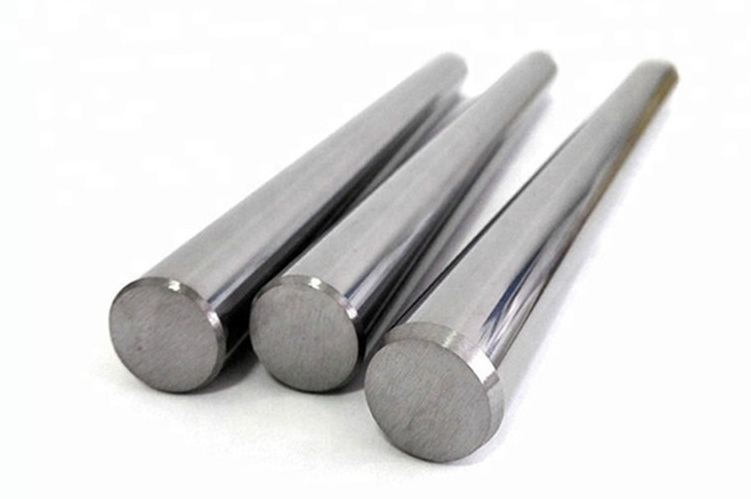Content Menu
● Introduction
● The Advantages of Tungsten Carbide Cutting Tools
>> High Hardness and Wear Resistance
>> Excellent Thermal Stability
>> Performance Under Heavy Loads
● Comparing Tungsten Carbide Round Bars to Other Cutting Tools
>> Tungsten Carbide vs. High-Speed Steel
>> Tungsten Carbide vs. Cobalt-Based Alloys
● Industries Benefiting from Tungsten Carbide Applications
>> Aerospace
>> Automotive Manufacturing
>> Medical Devices
>> Electronics
● How to Choose the Right Tungsten Carbide Grade for Your Project
>> Understanding Tungsten Carbide Grades
>> Choosing Based on Application
● Best Practices for Machining Tungsten Carbide Bars
>> Use the Right Cutting Parameters
>> Employ Proper Tool Geometry
>> Utilize Coolants
>> Regular Tool Maintenance
● The Importance of Tungsten Carbide Cutting Tools in Precision Engineering
>> Enhancing Production Efficiency
>> Improving Product Quality
>> Future Trends in Tungsten Carbide Applications
● Conclusion
● Related Questions
>> 1. What are the main benefits of using tungsten carbide cutting tools?
>> 2. How do I choose the right tungsten carbide grade for my project?
>> 3. What industries commonly use tungsten carbide cutting tools?
>> 4. How can I extend the life of my tungsten carbide tools?
>> 5. What makes tungsten carbide superior to high-speed steel for cutting tools?
Introduction
Tungsten carbide cutting tools have become a cornerstone in the field of precision engineering. Known for their exceptional hardness and durability, these tools are essential for a wide range of applications, from aerospace to automotive manufacturing. This article delves into the significance of tungsten carbide cutting tools, particularly focusing on tungsten carbide round bars, and explores their advantages, applications, and the reasons behind their necessity in precision engineering.

The Advantages of Tungsten Carbide Cutting Tools
Tungsten carbide cutting tools offer numerous advantages that make them indispensable in precision engineering.
High Hardness and Wear Resistance
One of the most notable properties of tungsten carbide is its incredible hardness. On the Mohs scale, tungsten carbide ranks around 8.5 to 9, making it one of the hardest materials available. This hardness translates into superior wear resistance, allowing tools made from tungsten carbide to maintain their cutting edges for longer periods compared to tools made from other materials. This characteristic is particularly beneficial in high-volume production environments where tool wear can significantly impact productivity and costs.
Excellent Thermal Stability
Tungsten carbide tools exhibit excellent thermal stability, which means they can withstand high temperatures without losing their hardness or structural integrity. This property is crucial during machining processes that generate significant heat, as it prevents tool deformation and extends tool life. The ability to operate at elevated temperatures also allows for faster cutting speeds, enhancing overall efficiency in manufacturing processes.
Performance Under Heavy Loads
In precision engineering, tools often face heavy loads and demanding conditions. Tungsten carbide cutting tools are designed to perform exceptionally well under such circumstances. Their high tensile strength ensures that they can withstand the stresses of cutting hard materials without chipping or breaking. This reliability is vital for maintaining precision and quality in engineering applications.
Comparing Tungsten Carbide Round Bars to Other Cutting Tools
When evaluating cutting tools, it is essential to compare tungsten carbide round bars with other materials, such as high-speed steel (HSS) and cobalt-based alloys.
Tungsten Carbide vs. High-Speed Steel
High-speed steel has been a traditional choice for cutting tools due to its good toughness and wear resistance. However, tungsten carbide surpasses HSS in hardness and wear resistance. While HSS tools may be suitable for softer materials, tungsten carbide is preferred for machining harder materials, such as stainless steel and titanium. The longevity of tungsten carbide tools often results in lower overall costs, as they require less frequent replacement.
Tungsten Carbide vs. Cobalt-Based Alloys
Cobalt-based alloys are known for their toughness and resistance to wear, but they do not match the hardness of tungsten carbide. While cobalt tools can be effective in specific applications, they tend to wear out more quickly when used on hard materials. Tungsten carbide round bars, with their superior hardness, provide a more reliable solution for precision engineering tasks that demand high performance and durability.
Industries Benefiting from Tungsten Carbide Applications
Tungsten carbide cutting tools are utilized across various industries, each benefiting from their unique properties.
Aerospace
In the aerospace industry, precision is paramount. Tungsten carbide cutting tools are used to machine components such as turbine blades, landing gear, and structural parts. The ability to maintain tight tolerances and resist wear makes tungsten carbide an ideal choice for these critical applications.
Automotive Manufacturing
The automotive sector relies heavily on tungsten carbide tools for machining engine components, transmission parts, and other critical elements. The durability and performance of tungsten carbide round bars ensure that automotive manufacturers can produce high-quality parts that meet stringent safety and performance standards.
Medical Devices
Precision engineering is crucial in the medical device industry, where the quality of components can directly impact patient safety. Tungsten carbide cutting tools are used to manufacture surgical instruments, implants, and diagnostic equipment. Their ability to maintain sharp edges and resist wear is essential for producing reliable medical devices.
Electronics
In the electronics industry, tungsten carbide tools are employed to machine components such as circuit boards and connectors. The precision and reliability of tungsten carbide cutting tools ensure that electronic devices function correctly and efficiently.

How to Choose the Right Tungsten Carbide Grade for Your Project
Selecting the appropriate tungsten carbide grade is critical for achieving optimal performance in precision engineering applications. Various grades of tungsten carbide are available, each designed for specific applications and conditions.
Understanding Tungsten Carbide Grades
Tungsten carbide grades are typically classified based on their cobalt content and the size of the tungsten carbide particles. Higher cobalt content generally increases toughness, while smaller particle sizes enhance hardness. When choosing a grade, consider the following factors:
- Material to be Machined: Harder materials require higher hardness grades.
- Cutting Conditions: High-speed machining may necessitate a grade with better thermal stability.
- Desired Tool Life: If tool longevity is a priority, select a grade with superior wear resistance.
Choosing Based on Application
For applications involving heavy cutting or machining of hard materials, a high-hardness tungsten carbide grade is recommended. Conversely, for applications requiring more toughness, such as interrupted cuts, a grade with higher cobalt content may be more suitable.
Best Practices for Machining Tungsten Carbide Bars
Machining tungsten carbide requires specific techniques to ensure optimal performance and tool longevity. Here are some best practices to consider:
Use the Right Cutting Parameters
Selecting the appropriate cutting speed, feed rate, and depth of cut is crucial when machining tungsten carbide. Generally, higher cutting speeds are recommended, but it is essential to balance speed with the risk of overheating.
Employ Proper Tool Geometry
The geometry of the cutting tool plays a significant role in its performance. Tools with sharp cutting edges and appropriate rake angles can significantly enhance cutting efficiency and reduce wear.
Utilize Coolants
Using coolants during machining can help dissipate heat and prolong tool life. It is essential to choose a coolant compatible with tungsten carbide to avoid any adverse reactions.
Regular Tool Maintenance
Regular inspection and maintenance of tungsten carbide tools can help identify wear early and prevent unexpected failures. Resharpening tools when necessary can extend their lifespan and maintain cutting performance.
The Importance of Tungsten Carbide Cutting Tools in Precision Engineering
Tungsten carbide cutting tools are essential for precision engineering due to their unique properties and performance characteristics. Their hardness, wear resistance, and thermal stability make them ideal for a wide range of applications, ensuring that manufacturers can produce high-quality components with tight tolerances.
Enhancing Production Efficiency
The use of tungsten carbide tools can significantly enhance production efficiency. Their ability to maintain sharp cutting edges for extended periods reduces downtime associated with tool changes and increases overall productivity. This efficiency is particularly important in high-volume manufacturing environments where time is money.
Improving Product Quality
Precision engineering demands high-quality components that meet strict specifications. Tungsten carbide cutting tools enable manufacturers to achieve the necessary precision and quality, resulting in products that perform reliably and meet customer expectations.
Future Trends in Tungsten Carbide Applications
As technology advances, the applications of tungsten carbide cutting tools are expected to expand further. Innovations in manufacturing processes and materials will likely lead to new uses for tungsten carbide, solidifying its position as a critical material in precision engineering.
Conclusion
Tungsten carbide cutting tools are indispensable in precision engineering, offering unmatched hardness, wear resistance, and thermal stability. Their ability to perform under heavy loads and maintain precision makes them essential for various industries, including aerospace, automotive, medical, and electronics. By understanding the advantages of tungsten carbide round bars and following best practices for machining, manufacturers can enhance productivity and product quality. As technology continues to evolve, the role of tungsten carbide in precision engineering will only grow, ensuring its relevance in the future of manufacturing.

Related Questions
1. What are the main benefits of using tungsten carbide cutting tools?
Tungsten carbide cutting tools offer high hardness, excellent wear resistance, and thermal stability, making them ideal for precision machining applications.
2. How do I choose the right tungsten carbide grade for my project?
Selecting the right grade depends on the material to be machined, cutting conditions, and desired tool life. Higher hardness grades are suitable for hard materials, while tougher grades are better for interrupted cuts.
3. What industries commonly use tungsten carbide cutting tools?
Tungsten carbide cutting tools are widely used in aerospace, automotive manufacturing, medical devices, and electronics industries.
4. How can I extend the life of my tungsten carbide tools?
To extend the life of tungsten carbide tools, use the right cutting parameters, employ proper tool geometry, utilize coolants, and perform regular maintenance.
5. What makes tungsten carbide superior to high-speed steel for cutting tools?
Tungsten carbide is harder and more wear-resistant than high-speed steel, making it more suitable for machining hard materials and providing longer tool life.
















